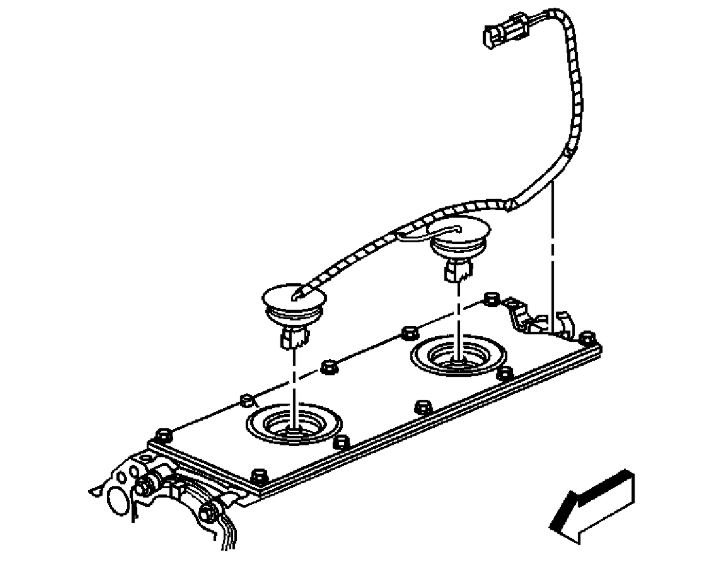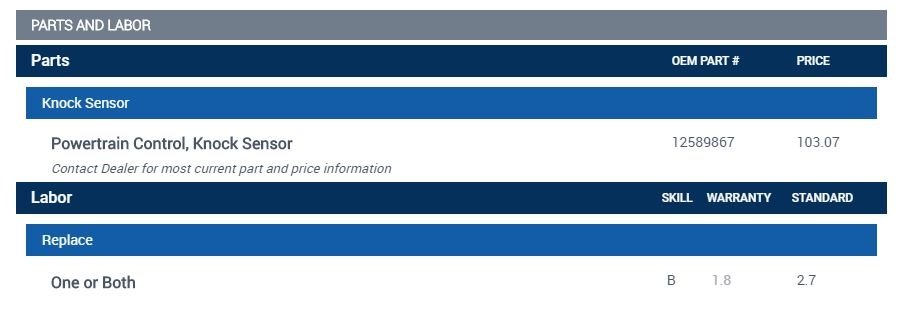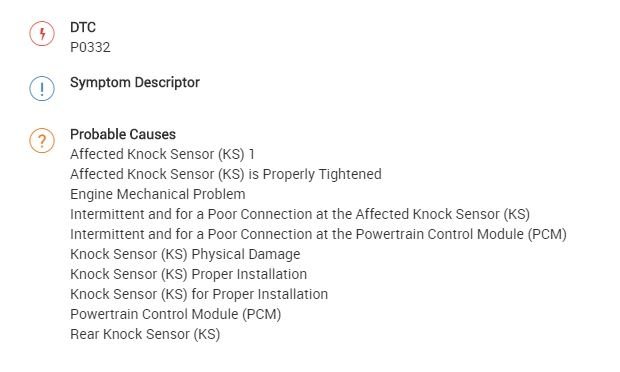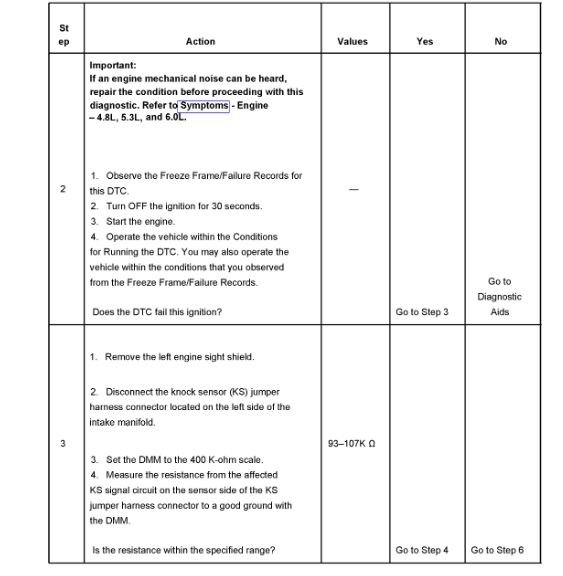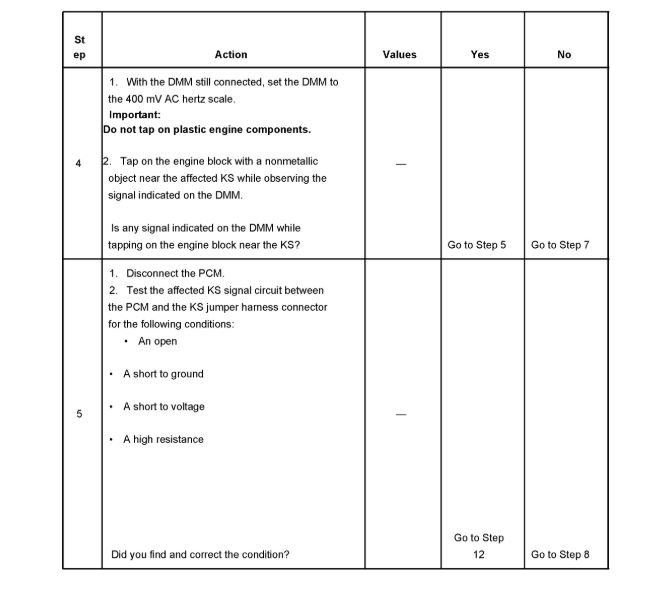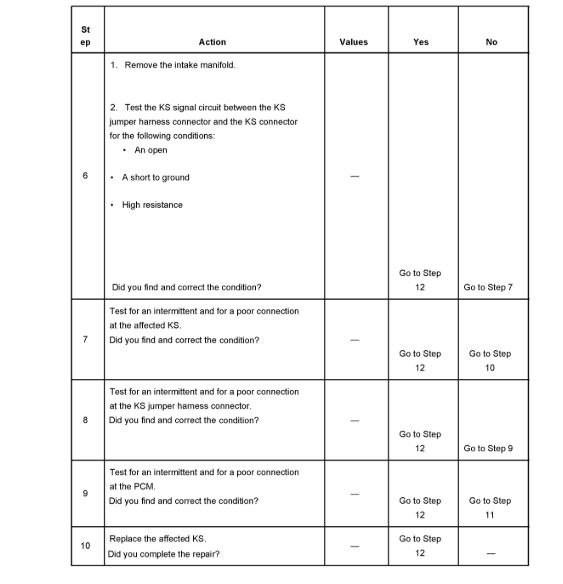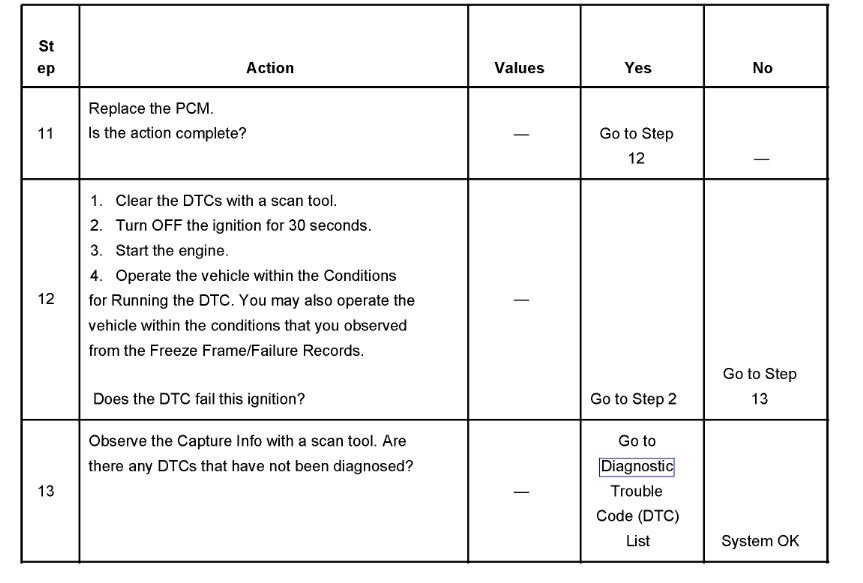Good morning,
I attached the parts and labor time for you if it is the sensor that is bad. There are 2 sensors and are replaced together. With labor rates in my area, the labor is around $400.00 plus the part listed.
Diagnostics need to be done to verify it is the sensor. Codes rarely identify bad parts, just failed systems.
I attached the flow chart for the code. These items need to be checked to verify the failure.
https://www.2carpros.com/articles/how-to-check-wiring
Roy
DTC P0332
CIRCUIT DESCRIPTION
The knock sensor (KS) system enables the power-train control module (PCM) to control the ignition timing for the best possible performance while protecting the engine from potentially damaging levels of detonation. The system uses two KS located under the intake manifold. KS 1 is located at the front of the engine. KS 2 is located at the back of the engine. Each KS produces an AC voltage that varies depending on the vibration level during engine operation. The PCM adjusts the spark timing based on the amplitude and frequency of the KS signal. The PCM receives a signal from each KS through a signal circuit. The KS ground is supplied by the engine block through the sensor housing. The PCM uses each KS signal to calculate an average voltage range value. If the KS system is operating normally, the PCM should monitor the KS voltage varying above and below the voltage range. If the PCM detects the KS signal voltage within the voltage range, or the KS signal is not present, a DTC will set. DTC P0327 refers to the front KS. DTC P0332 refers to the rear KS.
CONDITIONS FOR RUNNING THE DTC
DTCs P0117, P0118, or P0125 are not set.
The minimum noise level must be learned. The minimum noise level is learned when the following conditions are met:
The engine coolant temperature (ECT) must be greater than 60°C (140°F).
The engine speed is between 475-975 RPM for 10 seconds.
The engine speed is between 1,500-3,000 RPM.
The manifold absolute pressure (Map) is less than 49 kPa.
The engine coolant temperature (ECT) is more than 60°C (140°F).
The throttle angle is more than 0 percent.
The engine run time is more than 10 seconds.
The ignition voltage is more than 10 volts.
CONDITIONS FOR SETTING THE DTC
The PCM detects that the KS signal is within the calculated voltage range or the KS signal is not present.
The above conditions are met for more than 9 seconds.
ACTION TAKEN WHEN THE DTC SETS
The control module illuminates the malfunction indicator lamp (MIL) on the second consecutive ignition cycle that the diagnostic runs and fails.
The control module records the operating conditions at the time the diagnostic fails. The first time the diagnostic fails, the control module stores this information in the Failure Records. If the diagnostic reports a failure on the second consecutive ignition cycle, the control module records the operating conditions at the time of the failure. The control module writes the operating conditions to the Freeze Frame and updates the Failure Records.
CONDITIONS FOR CLEARING THE MIL/DTC
The control module turns OFF the malfunction indicator lamp (MIL) after 3 consecutive ignition cycles that the diagnostic runs and does not fail.
A current DTC, Last Test Failed, clears when the diagnostic runs and passes.
A history DTC clears after 40 consecutive warm-up cycles, if no failures are reported by this or any other emission related diagnostic.
Clear the MIL and the DTC with a scan tool.
DIAGNOSTIC AIDS
If DTCs P0327 and P0332 are set at the same time, inspect for poor connections at the KS harness jumper, located at the left rear side of the intake manifold.
Inspect the KS for physical damage. A KS that is dropped or damaged may cause a DTC to set.
Inspect the KS for proper installation. A KS that is loose or over torqued may cause a DTC to set. The KS should be free of thread sealant. The KS mounting surface should be free of burrs, casting flash, and foreign material.
For an intermittent condition, refer to Intermittent Conditions. See: Computers and Control Systems > Initial Inspection and Diagnostic Overview > Intermittent Conditions
Images (Click to make bigger)
Wednesday, May 5th, 2021 AT 2:13 PM
